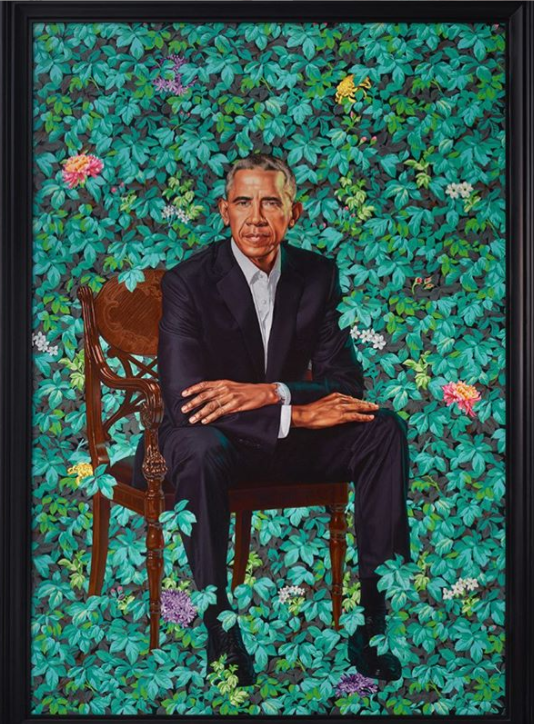Malorie Blackman’s work has not only earnt her a large space on my bookshelf but numerous awards including the position of Children’s Laureate 2013-15 and an OBE for services to children’s literature in 2008.

My personal favourite, her famous Noughts and Crosses series, which has seen a further increase in popularity during lockdown following the release of a BBC adaption in March, presents an alternate history in which Africa colonised Europe, where white people are brutally oppressed in ways that are only all too familiar if we look at the oppression and discrimination faced by Black people throughout our own history and into the present day.
The engaging way in which Blackman addresses contemporary issues surrounding race, violence and technology makes her work a must read for everyone and a firm favourite of mine throughout my teens.
Emma Leveson
“What they call you is one thing. What you answer to is something else”
These are the words of Lucille Clifton, a prolific and widely respected poet, born in 1936 in Depew, New York.
Descending from a family of slaves, Clifton’s poems have proven a lifeline to millions of Black men and women, dealing with the issues of racism and gender; a radical pursuit for a woman in oppressive 20th century America.
Critically acclaimed, Clifton was awarded the prestigious Ruth Lilly Poetry Prize in 2007 and was the first author to have two books of poetry chosen as finalists of the Pulitzer Prize.
My personal favourite poem of Clifton’s, titled “Won’t you celebrate with me” is a powerful sonnet, speaking against the world that has marked Black women as undeserving and invisible. It is a victory poem against discrimination in which Clifton calls upon people to, “Come celebrate with me that everyday something has tried to kill me and has failed”. This is a vital message to the entirety of the Black community and poignantly reinforces an utterly inspiring message to all: the evil force of racism will never rise victorious.
Lyndsey Sleator
45 American Presidents have sat in the Oval Office, every one with an official presidential portrait hanging in the Smithsonian National Portrait Gallery in Washington D.C. But how many of those portraits were painted by Black artists?
The answer is one.

Kehinde Wiley, the first Black artist to paint a Presidential portrait.
What could be more appropriate for Black History Month? Noted for his vibrant depictions of the Black community, he was first commissioned to paint the former President, Barack Obama, in 2017. In convention with his style, he incorporated elements of Obama’s life and heritage into the painting, surrounding him with purple African lilies, chrysanthemum and white jasmines, a common theme in his works.
Aside from his Obama portrait, another famous Wiley painting, ‘Napoleon Leading the Army Over the Alps,’ depicts a young Black man riding a white horse in place of the French Emperor, Napoleon. This is the epitome of Kehinde Wiley’s style, which challenges stereotypes and presents Black people in a position of power and inspiration.
Ella Calderwood
The first individual who popped into my head when asked to think of my favourite black artist was Kingslee Daley, more commonly known by his pseudonym ‘Akala’.
My reasoning for this is because of the way in which he exhibits his artistic abilities through such different yet equally impressive mediums. Whether it be through his music, his activism or his flair for poetry and writing, there seems to be no expression of his that does not in some way provide a clearer understanding of the subject he is referring to.
As seen in his part memoir and part polemic from 2018 , ‘Natives: Race and Class in the Ruins of Empire’ – a book I cannot recommend strongly enough – he depicts the difficulties of growing up in Britain while being both Black and working class, a political system that works only for a select few and how this country’s history has made ‘race’ a much greater problem than the majority of Brits would ever be willing to admit.
Syd Lawther

Basquiat died at the age of 27 of a heroin overdose in his New York apartment. Before his death, however, he was a rising star in the New York art world. His unique neo-expressionist style explored themes of poverty, wealth, segregation and integration.
Described by Fred Hoffman as a sort of 'oracle', due to an innate capacity to distil his perceptions of the outside world down to their essence and project them outwards through various creative acts, such as graffiti, music and drawings. Basquiat told a lot of stories with his art, essentially.
Perhaps what most draws me to Basquiat, more than his art style, is the amount of his thought that comes through, such as in Irony of Negro Policeman (1981).
Muslim Taseer
Featured Image: Rumours of War by Kehinde Wiley @Kehindewiley via Instagram